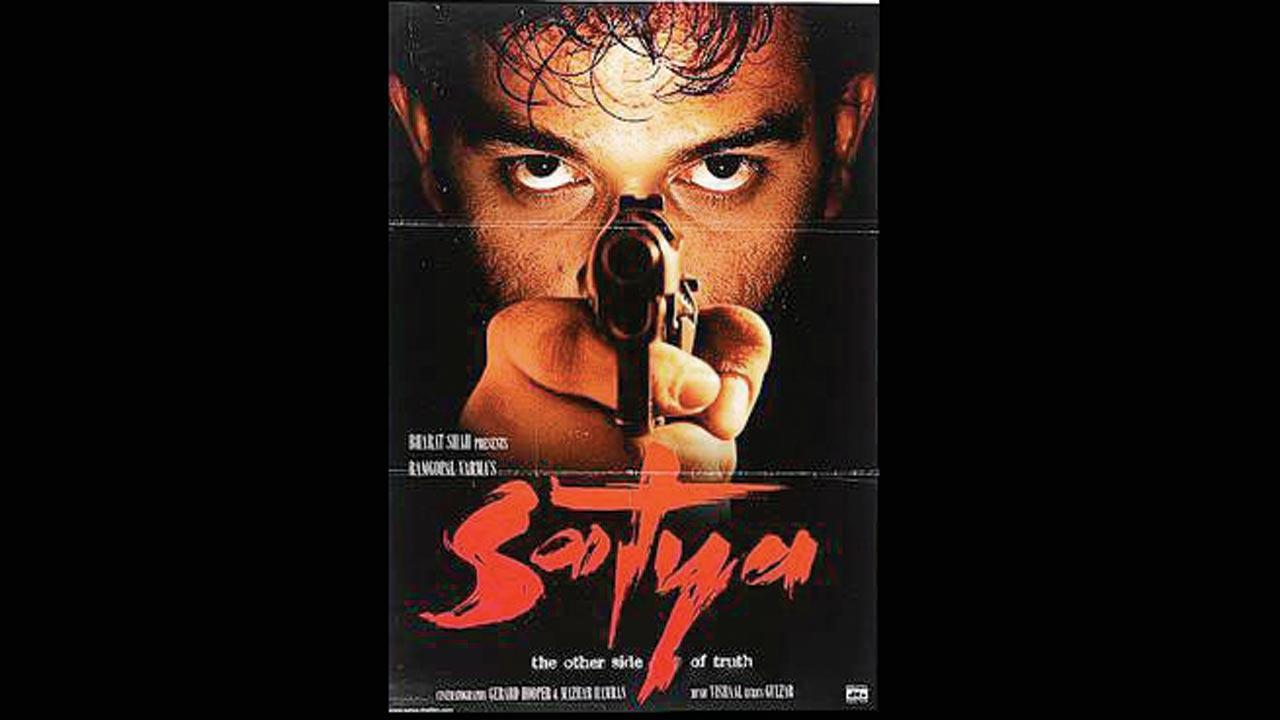Film critic Uday Bhatia, who became obsessed with the gangster film Satya as a teen, talks to its makers for a new book that explores its cult status

Ram Gopal Varma’s Satya starring JD Chakravarthy and Urmila Matondkar released in 1998
Uday Bhatia was only 14 when Satya released, and yet, it had a big impact on him. It was only when he started watching movies more seriously that he realised “a lot of roads in Hindi cinema led back to Satya; at that point, I started looking at it with fresh eyes”.
ADVERTISEMENT
His new book titled, Bullets Over Bombay (HarperCollins India), revisits Ram Gopal Varma’s film and how it went on to earn cult status. “A lot of people who were young when Satya released in 1998, took its lessons and incorporated its values into their filmmaking. And that’s why it continues to be relevant even today,” Bhatia shares.
The book’s dedication reads, “To the films, filmmakers and film viewers of ’90s”. Bhatia starts by offering a glimpse of that time, transporting every ’90s kid into the era, speaking about all the significant events that occurred then, before leading us to this iconic movie. “In 1997-98, there wasn’t a lot of exciting cinema being released, especially in a non-studio. Also, small banner films were still not really coming out with the frequency they did post Satya and the industry at that time was largely drawn towards love stories and romantic dramas,” he says. Satya’s grittiness, and the fact that it was unpolished gave it an immediate quality—something that was different from whatever was shown on screen in Hindi cinema, according to the film critic.
While there had been gangster movies in the past, “Satya broke away from that by showing a very street level point of view without any gloss. It also normalised the people who were gangsters on one hand, and were also family men on the other,” he says. “So, for the audience to see someone who was a gangster, but without the mythology of it—just ordinary people who also happen to be killers—it was quite revolutionary.” But according to Bhatia, this isn’t the only reason why Satya became so popular. “The writing holds up—it is funny and fast and slightly profane, which was unusual for that time and still is to this day. It wasn’t just a great gangster film, but also a great city film. It hasn’t aged badly.”
Uday Bhatia
“More importantly, at a time when Hindi cinema was spinning its wheels, it [Satya] showed the way forward,” he writes in the book. Explaining further, Bhatia says, “It was also forward in ways that you didn’t need to have a big star cast, you didn’t have to have a lot of choreographed songs and item numbers and you could just move ahead with a good story and a good idea of what you are doing, rather than sticking to the formula.”
Satya created an impact on the people who worked on it. “Many who worked on Satya and who were inspired by it are still very much part of the industry right now,” he says.
Bhatia’s favourite scene from the movie was when Satya, played by JD Chakravarthy, meets the gang for the first time, “It’s done in one take. It lasts for around a minute, but it a very exciting scene because we are not cutting away the excitement of this guy meeting his new life for the first time, and that’s quite a wonderful way to do it.”
In the book, Gulzar talks about his song Goli Maaro Bheje Mein. “I wrote a song… for a character who is a violent man, a man who listens to no one and shoots people who contradict him or come in his way. He decides to sing a song when he is drunk. The gangster cannot sing a Ghalib ghazal.” Bhatia believes that this song, which was released a few months prior to the film gave the audience an idea of what they should expect—a direct gangster film.
 Subscribe today by clicking the link and stay updated with the latest news!" Click here!
Subscribe today by clicking the link and stay updated with the latest news!" Click here!






